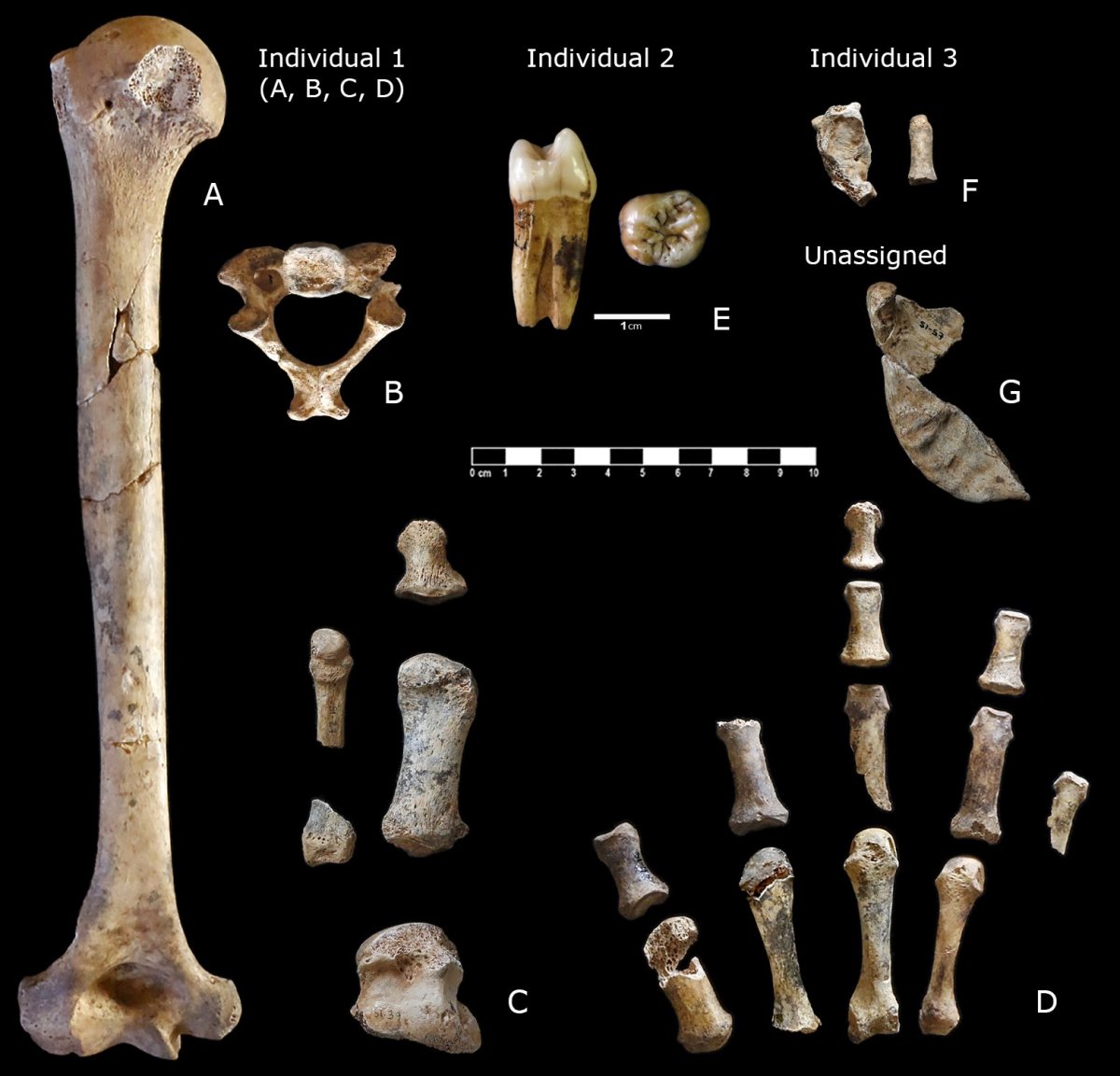A collection of bones that were stored in a box for decades are those of Neanderthals who lived more than 50,000 years ago, a study has found.
On Thursday, a team of researchers announced that they had identified 54 Neanderthal remains, corresponding to at least three individuals in the bone collection.
The bones were unveiled to the public at a presentation Thursday in the autonomous community of Catalonia, northeastern Spain. They are also the subject of a corresponding study published the same day in the journal Frontiers in Earth Science.
The remains originate from a cave site known as "Cova Simanya" located in the Sant Llorenç del Munt i de l'Obac Natural Park just outside the city of Barcelona—the capital of Catalonia.

Researchers said the bones represent the most significant collection of Neanderthal remains ever found in the region, and one of the most important discovered in the Iberian Peninsula as a whole.
According to the study, the remains found at Cova Simanya, which measures almost 1,000 feet in length, correspond to three Neanderthal individuals: an adult, likely a woman, a juvenile around 11-12 years old, and a child of roughly 7-8 years old.
Neanderthals (Homo neanderthalensis) are one of our closest extinct relatives. They lived in Eurasia until their disappearance around 40,000 years ago.
The remains include a diverse set of anatomical parts including teeth, jaw bones, vertebrae, and limb bones from both the upper and lower extremities.
"The adult individual is particularly noteworthy, as remains from both arms have been identified, including a complete humerus and an almost complete hand, as well as feet, various vertebrae, and ribs," Antonio Rosas, director of the paleoanthropology group at the National Museum of Natural Sciences in Madrid, Spain, said in a press release.
Initial dating work has indicated that the presence of Neanderthals at Cova Simanya dates to at least 50,000 years ago, Juan Ignacio Morales, co-director of the excavations and researcher at the Catalan Institute of Human Paleoecology and Social Evolution (IPHES), said in the press release. Alternative dating techniques are currently being used that will be able to determine the age of the remains with greater precision.
The circumstances that led to the latest findings are somewhat fortuitous. The vast majority of the remains were first uncovered outside the entrance to the cave during a clandestine dig by amateur Miguel Aznar in the late 1970s. Alongside human bones, he also uncovered animal remains as well as pottery fragments.
Aznar collected the various remains and kept them at his home until 1986 when he donated the finds to the Archaeology Museum of Catalonia, which stored them in a box inside a warehouse. For decades, the remains went unnoticed, until researchers decided to open it in 2020.
The importance of what was inside the box was unknown, and neither was the fact that it contained Neanderthal remains.
"We weren't looking for Neanderthal remains, in the box there were also ceramics, tools and bones. The truth is that we thought everything would be more recent. We could not suspect that inside there were remains from more than 50,000 years ago," said Josep Maria Fullola, director of the prehistoric studies and research seminar at the University of Barcelona, Catalan daily Ara reported.
Researchers subsequently analyzed the remains, finding that they displayed unequivocal anatomical features enabling them to attribute the bones to Neanderthals.
The identification of the Neanderthal remains sparked a new research project at Cova Simanya with the aim of understanding more about the context in which the bones were found.

These investigations—beginning in 2020—uncovered an additional wisdom tooth that belonged to the juvenile, which enabled the researchers to link the collection in the box with the cave site. Aside from this tooth, all of the other 53 Neanderthal remains documented in the study were found by Aznar in the 1970s.
"Anatomically [the wisdom tooth] is not the most important piece, but it allowed us to connect it with two more of his teeth also kept in the box," said Juan Ignacio Morales, a researcher at IPHES and the University of Barcelona, and co-director of the excavation, El Periodico reported.
Research at the site has also uncovered stone tools and animal remains, as well as evidence of fire use, indicating that the site was used by Neanderthals as a sporadic camp during the middle of the Paleolithic period, which ended around 10,000 B.C.
In addition, fieldwork has shown that the cave served as a hibernation refuge for both brown bears and the extinct cave bear until at least 42,000 years ago.
It is not clear whether the three Neanderthal individuals documented in the study were related to each other because researchers have not yet been able to extract DNA from the bones. But the scientists said the latest findings could help shed light on the origin and evolution of Neanderthals in the Iberian Peninsula.
"The fossils from Cova Simanya will help clarify the role that the Iberian Peninsula has played in the complex evolutionary history of Neanderthals," Rosas said.
"We are beginning to understand that there are different lineages of this extinct species, but as of now, we still do not know the reasons for how and where they originated. Iberia and Cova Simanya have much to say in this regard."
Uncommon Knowledge
Newsweek is committed to challenging conventional wisdom and finding connections in the search for common ground.
Newsweek is committed to challenging conventional wisdom and finding connections in the search for common ground.
About the writer
Aristos is a Newsweek science reporter with the London, U.K., bureau. He reports on science and health topics, including; animal, ... Read more
To read how Newsweek uses AI as a newsroom tool, Click here.






